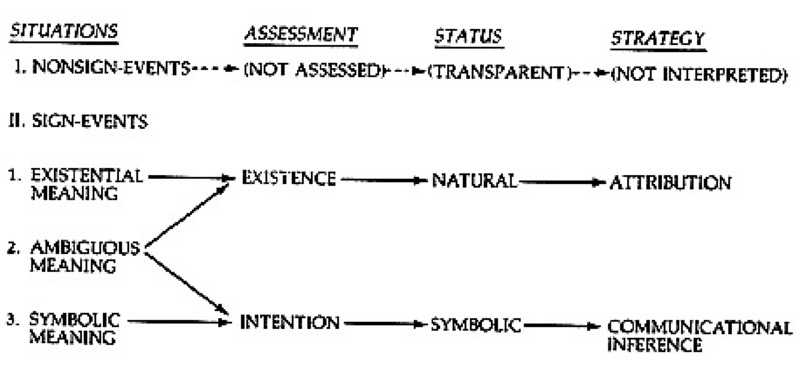-
Title
-
The Context of Interpretation
-
Description
-
Persons, objects, and events that we encounter may also be classified as "sign-events" or "nonsign-events." Nonsign-events are those activities of everyday life which do not evoke the use of any strategy to determine their meaning.[The Figure] describes the larger context in which human beings interact with their environment and with the persons, objects, and events that they perceive and recognize. In certain contexts, people learn to treat some of these situations as signs to which they may assign existential or symbolic meaning.
It is important to note that the distinction between sign- and nonsign-events must not be taken as a categorical classification of any particular persons, objects, or events. Any event, depending upon its context and the context of the observer, may be assigned sign value. By the same token, any event may be disregarded and not treated as a sign.
-
Designer
-
Worth, Sol
-
Gross, Larry
-
Date
-
1974
-
Source
-
"Symbolic Strategies"
-
Bibliographic Citation
-
Worth, Sol and Larry Gross. 1974 "Symbolic strategies." In Studying Visual Communication (1981), by Sol Worth. Edited, with an Introduction, by Larry Gross. University of Pennsylvania Press. Figure 5-1. page 136.
-
Worth, Sol and Larry Gross. 1974 "Symbolic Strategies." Journal of Communication. 24:27-39.
-
has attribute
-
English
Arrow
-
English
Dash Line
-
English
Solid Line
-
use feature
-
English
Brace
-
depict things of type
-
English
Sequence or Process
-
English
Typological or Classification
-
Coverage
-
communication
-
semiotics

